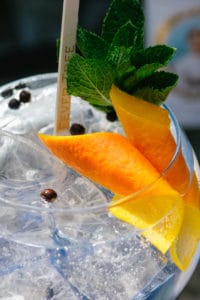Here at Sub 13 we love gin, but what is it that separates this delicious liquor from the competition? The answer is, of course, juniper. If you have been lucky enough to scale the ragged heights of the peak district, or the unkempt hills of highland Scotland you’ve probably encountered that fragrant bush to whom we gin-lovers owe so much. But there is a lot more to that little berry than meets the eye:
A long history of medicinal use
Even before wily distillers began adding it to our favourite tipple the juniper berry was well-established as a medicine. The oils within the berry have strongly diuretic properties, which prompted herbalists to proscribe them for kidney ailments as long ago as the middle ages. The medicinal use of juniper can even be traced back as far as ancient Egypt. During the black death, doctors would burn juniper in the chamber of the afflicted or stuff it into their masks. At the time, it was believed that airborne scents were responsible for disease and that masking these with perfume acted as a preventative to infection.

Juniper means chastity
The juniper bush has been used in art to represent chastity: whilst chastity and gin may well be an anathema these days, to most in the renaissance it indicated pureness and virginity. For example, Leonardo da Vinci’s Ginevrs de’Benci has a juniper bush in the background, acting as a visual adjunct to the subject’s chastity
It gave its name to gin
Of course our word “gin” is taken directly from the Dutch jenever, which literally means juniper. It’s thought that during the hundred years war when Dutch troops reinforced the British, the former’s love of juniper-based spirit wasn’t wasted on the Brits. “Why are they all so pi**ed and happy?” they may well have asked, and the reason was their native jenever. Chuck in the connection between military prowess and intoxication with gin and you even have an idiom: “Dutch courage”.

A little goes a long way
The intense aromatic flavour means they aren’t the sort of berry you would want to enjoy with cream at Wimbledon but a few added to a G&T make a great garnish. In fact, when used for gin production you only need 25g of the berries to make a standard bottle! Their strong taste makes them excellent for cookery too. They really enhance a game casserole but are also excellent used in curing salmon.
UK plants under threat
In its native UK strongholds of Scotland and northern England the juniper shrub is under threat from a deadly fungal infection. Whilst most commercially produced gin uses juniper grown in Eastern Europe it would be a shame to see this noble plant disappear from our shores.
So there you have it, five fun facts about juniper, without which our six o'clock tipple would be considerably less enjoyable. Cheers!

.svg)


.png)




